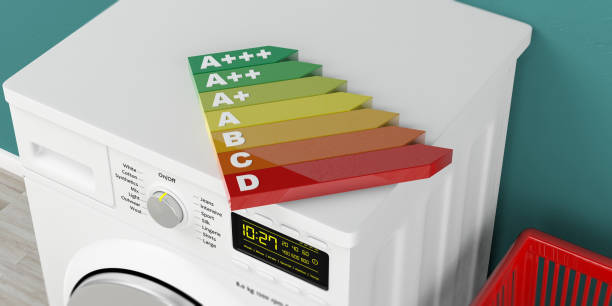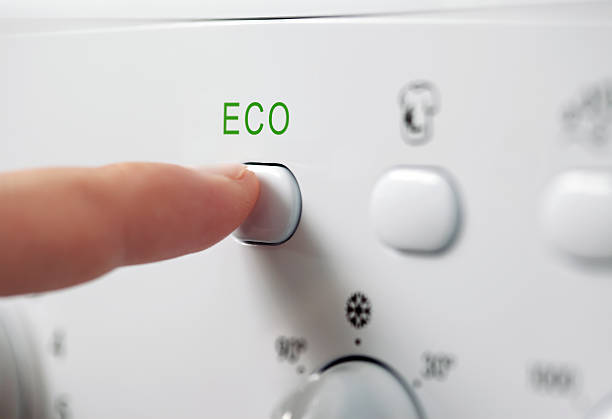The trusty washing machine symbolizes domestic liberation, sparing you from the laborious task of hand-washing your clothes.
But as you revel in the ease it brings to your lives, a nagging question lingers: Do washing machines use a lot of electricity? It’s a query that carries significant weight for your pockets and the environment.
So, I will uncover the hidden complexities and energy-hungry secrets that lie within the confines of this household appliance.
Let’s begin!
Do Washing Machines Use a Lot of Electricity?
Washing machines consume electricity, but whether they use a lot depends on various factors. Modern, energy-efficient washing machines are designed to minimize electricity consumption.
Front-loading machines tend to be more efficient than top-loading ones, as they use less water and thus require less energy to heat that water. Additionally, the energy efficiency of a washing machine can be indicated by its Energy Star rating.
On average, a washing machine typically uses between 0.2 to 2.0 kilowatt-hours (kWh) per load, with high-efficiency models at the lower end of that range.
The exact amount can vary based on factors such as the machine’s size, temperature settings, cycle duration, and whether you use a dryer afterward.
To reduce electricity usage, consider washing full loads, using cold water when possible, and selecting shorter cycles for lightly soiled clothes.
Regular maintenance, such as cleaning the lint filter and ensuring the machine is in good working condition, can also help optimize energy efficiency. While washing machines do consume electricity, their impact can be minimized with energy-conscious choices and modern, efficient appliances.

Energy Efficiency Innovations
High-efficiency washers
High-efficiency washing machines, often labeled as HE washers, are designed to use less water and energy compared to traditional top-loading machines.
They achieve this through several key features:
- Front-loading Design: HE washers are typically front-loading, which means they use a horizontal drum that tumbles clothes through a shallow pool of water. This design uses less water compared to the deep-fill tubs of top-loading machines.
- Variable Speed Motors: HE washers often feature variable speed motors that adjust the drum’s rotation speed to match the load’s size and fabric type. This reduces energy wastage.
- Advanced Water Jets: Some HE washers use water jets to enhance cleaning efficiency, further reducing the need for excess water.
Inverter motors
Traditional washing machines use fixed-speed motors that run at a constant speed regardless of the load size or fabric type.
Inverter motors, on the other hand, are variable-speed motors that adjust their power consumption according to the specific requirements of each wash cycle. This innovation offers several advantages:
- Energy Efficiency: Inverter motors consume less energy because they only use as much power as needed for a given cycle.
- Quiet Operation: They operate more quietly than traditional motors because they don’t have to run at full speed all the time.
- Increased Durability: Inverter motors tend to have a longer lifespan due to reduced wear and tear.
Water-saving features
Water conservation is a critical aspect of energy efficiency in washing machines. Modern machines come equipped with various water-saving technologies:
- Load Sensors: These sensors detect the size of the laundry load and adjust the water level accordingly, preventing excessive water use.
- Dual Water Inlets: Some machines have separate inlets for hot and cold water, allowing for precise temperature control and reducing the need for hot water heating.
- Steam Cleaning: Steam cleaning features use less water by using steam to soften and lift stains, reducing the reliance on water-intensive cycles.
Also read: Can I Leave My Washing Machine On When I’m Out?
How to Calculate Energy Costs
- Identify the Washing Machine’s Power Rating: To calculate the energy consumption of your washing machine, you first need to find its power rating. This is typically measured in watts (W) and can usually be found on a label or in the user manual of the machine.
- Determine the Usage Time: Next, you’ll need to estimate how long your washing machine runs for each cycle. Most machines have cycle times listed in their user manuals or on the control panel. If you’re not sure, you can use a stopwatch to time a few cycles.
- Convert Power to Kilowatts: Electricity is billed in kilowatt-hours (kWh). To do this, divide the power rating of your washing machine by 1,000 to convert it to kilowatts. For example, if your washing machine is rated at 1,200 watts, it would be 1.2 kW.
- Calculate Energy Consumption: Multiply the power rating in kilowatts by the number of hours your washing machine runs. For example, if your washing machine runs for 1 hour per cycle, and its power rating is 1.2 kW, the energy consumption for one cycle would be 1.2 kWh.
Estimating the cost of running your washing machine
- Determine the Cost per kWh: The cost of electricity varies depending on where you live and your electricity provider. Check your recent electricity bill or contact your utility company to find the cost per kilowatt-hour (kWh).
- Calculate the Cost per Cycle: To estimate the cost of running your washing machine for one cycle, multiply the energy consumption per cycle (calculated in step A4) by the cost per kWh (from step B1). For example, if your washing machine uses 1.2 kWh per cycle and your electricity rate is $0.12 per kWh, one cycle would cost you $0.12 * 1.2 kWh = $0.144.
- Monthly or Annual Cost: If you want to know the monthly or annual cost of running your washing machine, multiply the cost per cycle (from step B2) by the number of times you run your machine in a month or year. Be sure to account for any variations in your laundry habits, such as seasonal changes or household size.
- Consider Energy-Saving Measures: If you find that your washing machine’s energy consumption is higher than you’d like, consider implementing energy-saving measures (as discussed in section VI). These measures can help reduce your electricity costs over time.
By following these steps, you may accurately estimate the energy consumption and associated costs of running your washing machine.
Read more: Can I Leave The Washing Machine On?

Tips for Reducing Washing Machine Energy Consumption
Optimal load sizes
- Understand Load Capacity: Washing machines come with load capacity specifications. It’s essential to follow these guidelines because overloading or underloading the machine can increase energy consumption. Overloading strains the motor, while underloading wastes water and energy.
- Sort Laundry Wisely: Sort your laundry by color, fabric type, and soil level. This allows you to run full loads with similar laundry items, ensuring efficient washing cycles.
- Use the Right Load Size: Modern washing machines often have sensors that adjust water and energy usage based on the load size. Let the machine automatically select the appropriate water level if it has this feature.
Temperature settings
- Cold Water Washing: Whenever possible, opt for cold water wash cycles. Using cold water instead of hot or warm can significantly reduce energy consumption. Cold water is just as effective at cleaning most clothes and is gentler on fabrics.
- Lower Temperature Detergents: Choose detergents designed for cold water washing. These detergents are formulated to work effectively in lower water temperatures.
- Hot Water for Specific Situations: Reserve hot water washes for heavily soiled items or bedding. Using hot water sparingly reduces overall energy use.
Proper maintenance
- Regular Cleaning: Keep the washing machine clean by running an empty cycle with hot water and vinegar or a washing machine cleaner. This prevents the buildup of mineral deposits, mold, and mildew, which can affect efficiency.
- Inspect Hoses and Filters: Periodically check the hoses for leaks and replace them if necessary. Clean or replace filters as recommended by the manufacturer to ensure proper water flow.
- Balance the Load: Ensure that the washing machine is properly leveled. An unbalanced machine can vibrate excessively, leading to increased wear and tear on the motor and higher energy usage.
Effective detergent usage
- Use the Right Amount: Follow the manufacturer’s instructions for detergent usage. Using too much detergent can lead to excess suds, which can prolong rinse cycles, increasing water and energy consumption.
- Choose High-Efficiency (HE) Detergents: HE detergents are designed to work with front-loading and high-efficiency top-loading machines. They produce fewer suds and are formulated to be more effective in lower water volumes, reducing the need for extra rinses.
- Pre-treat Stains: Instead of using longer wash cycles, pre-treat stains and heavily soiled areas to avoid the need for extra washing or higher water temperatures.
Conclusion
Do washing machines use a lot of electricity? Washing machines consume electricity, but the extent varies depending on load size, temperature settings, and machine type.
You can minimize their electricity usage by adhering to energy-efficient practices like cold water, proper load sizes, and regular maintenance. While washing machines consume energy, their convenience in our daily lives is well worth it.
Also, choosing an energy-efficient model with a high Energy Star rating can further reduce the environmental and financial impact, making laundry day convenient and eco-friendly.







